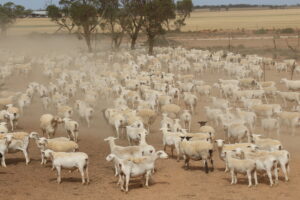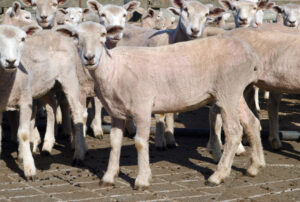The Australian Bureau of Statistics (ABS) lamb and sheep slaughter data is out for the June quarter, and lamb rates are on the rise. However, it was sheep slaughter which really jumped compared to last year.
After posting a very slow start to the year in the March quarter, lamb slaughter jumped 9.5% higher in the June quarter. The highest quarterly slaughter levels since March 2020 saw lambs post a 1.2% increase on the June quarter in 2021 (figure 1), and pushed slaughter to a 1% increase for the first half of the year.
If we look at the 2021-22 financial year, just 0.6% more lambs were slaughtered than in 2020-21, despite the 7% increase in the sheep flock reported for the 30th June 2021. Usually we would expect an increase in the flock of that proportion to flow through to lamb slaughter the following financial year. Lambs carried over into the 2022-23 financial year are likely part of the reason for lower prices at the moment.
Lamb carcass weights hit record levels in the June quarter. Figure 2 shows average carcass weights hit 25.8kgs per head in the June quarter. With carcass weights gaining 2.5% on March, it does look like lambs were carried over from the March quarter. However, carcase weights were only slightly higher the previous record set in June 21, which suggests higher weights in the second quarter might be becoming the norm.
Sheep slaughter showed some interesting trends in the June quarter. Sheep slaughter was 13% down on the first quarter. However, this was a light fall compared to the five year average second quarter decrease of 29%.
Compared to the June quarter in 2021, sheep slaughter was up 27% (figure 2), the fifth year on year increase in a row. For the 2021-22 financial year sheep slaughter reached 6.23 million head, a 15% increase on 2020-21. Still much lower than the 8.2 million head slaughtered in 2019-20.
What does it mean?
The increased flock seems to have translated into more sheep being slaughtered, but not into lambs yet. More ewe lambs would have joined breeding flocks, and we might be seeing the results in markets now. Weaker lamb prices all round, and restocker lambs in particular suggest the push to restock might be waning.
Have any questions or comments?
Key Points
- ABS lamb slaughter statistics show and increase on last quarter, but steady on last year.
- Lambs slaughter weights hit a a record high in the June quarter.
- Sheep slaughter was much stronger year on year in the June quarter and financial year.
Click on figure to expand
Click on figure to expand
Click on figure to expand
Data sources: ABS, MLA, Mecardo















